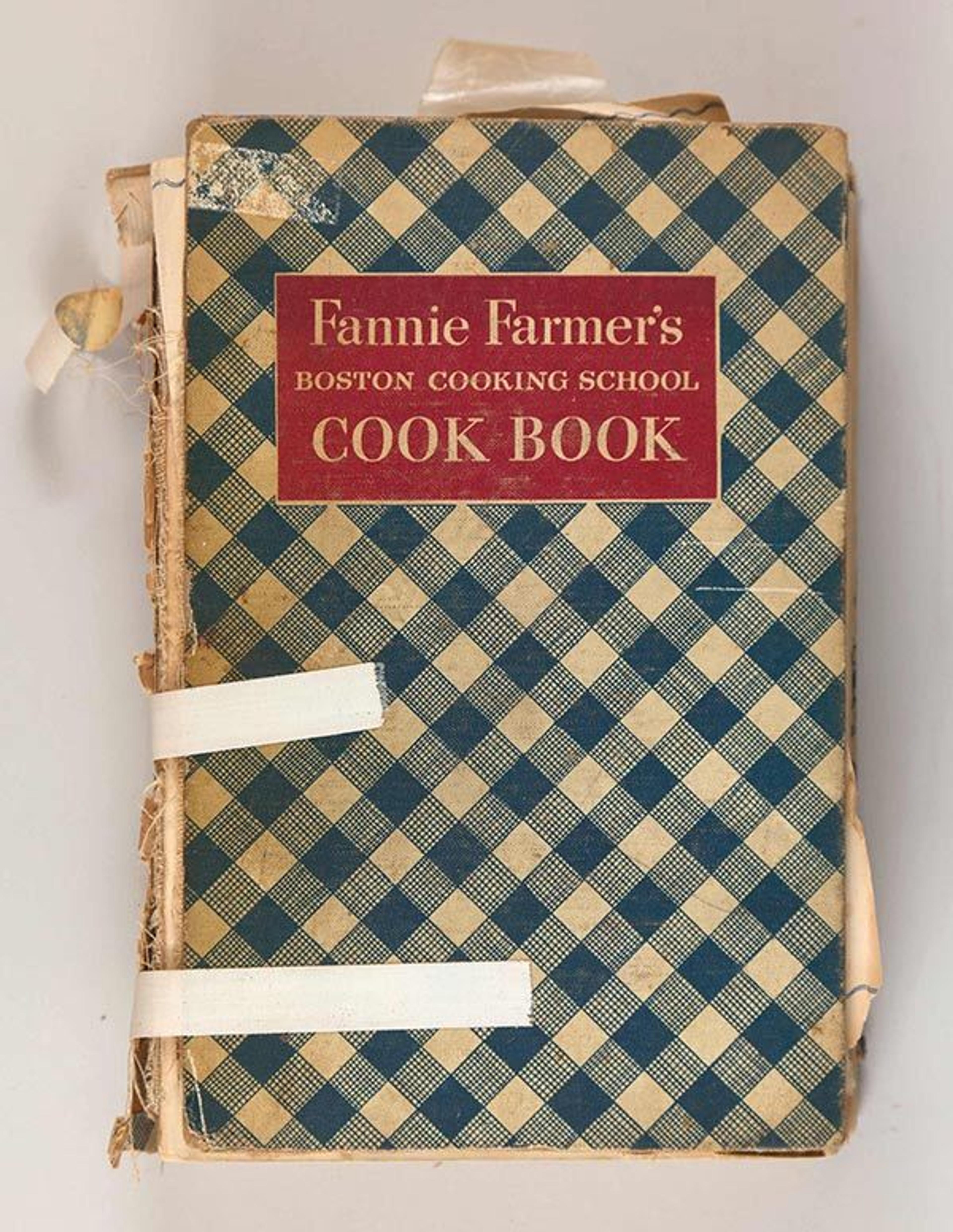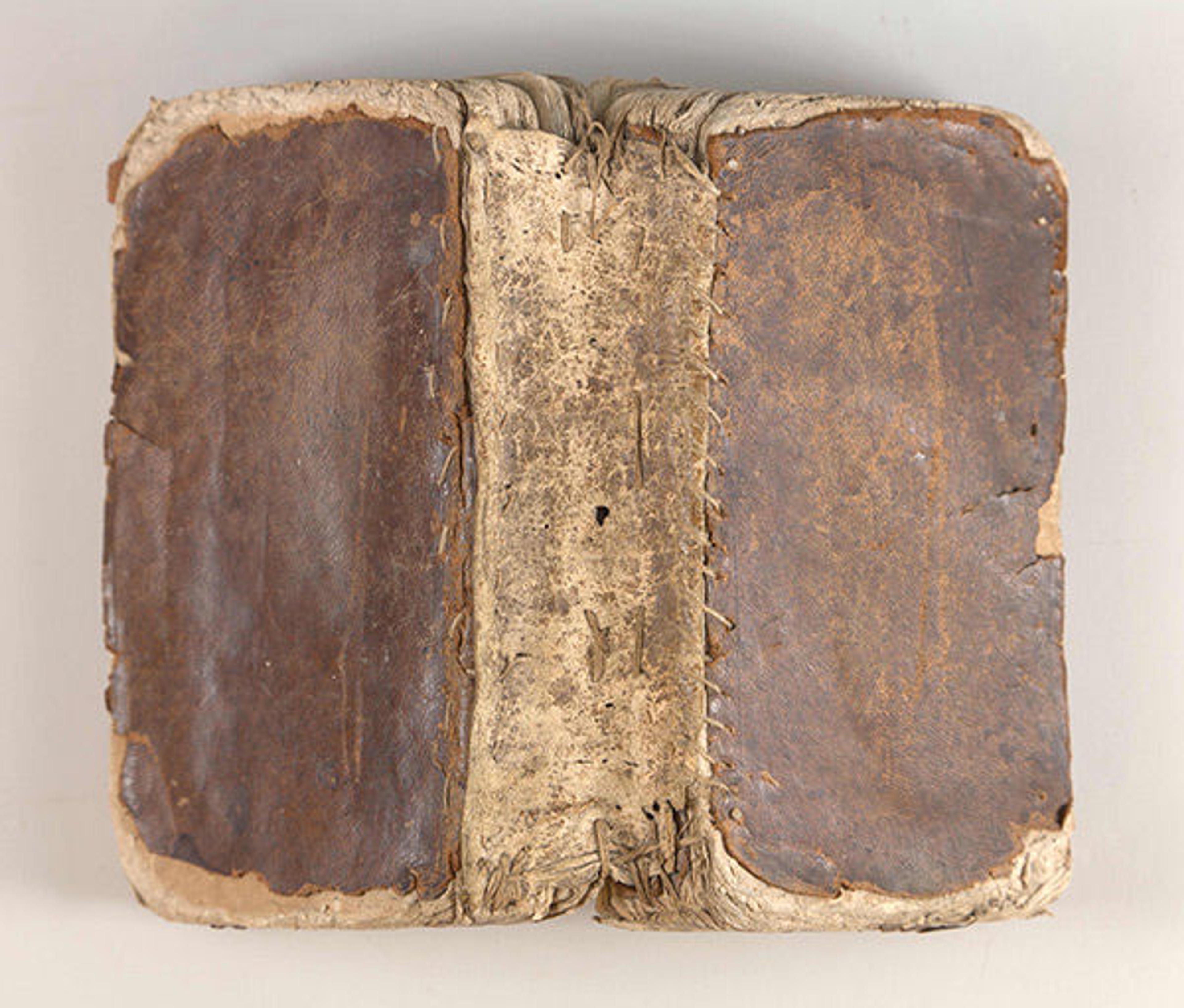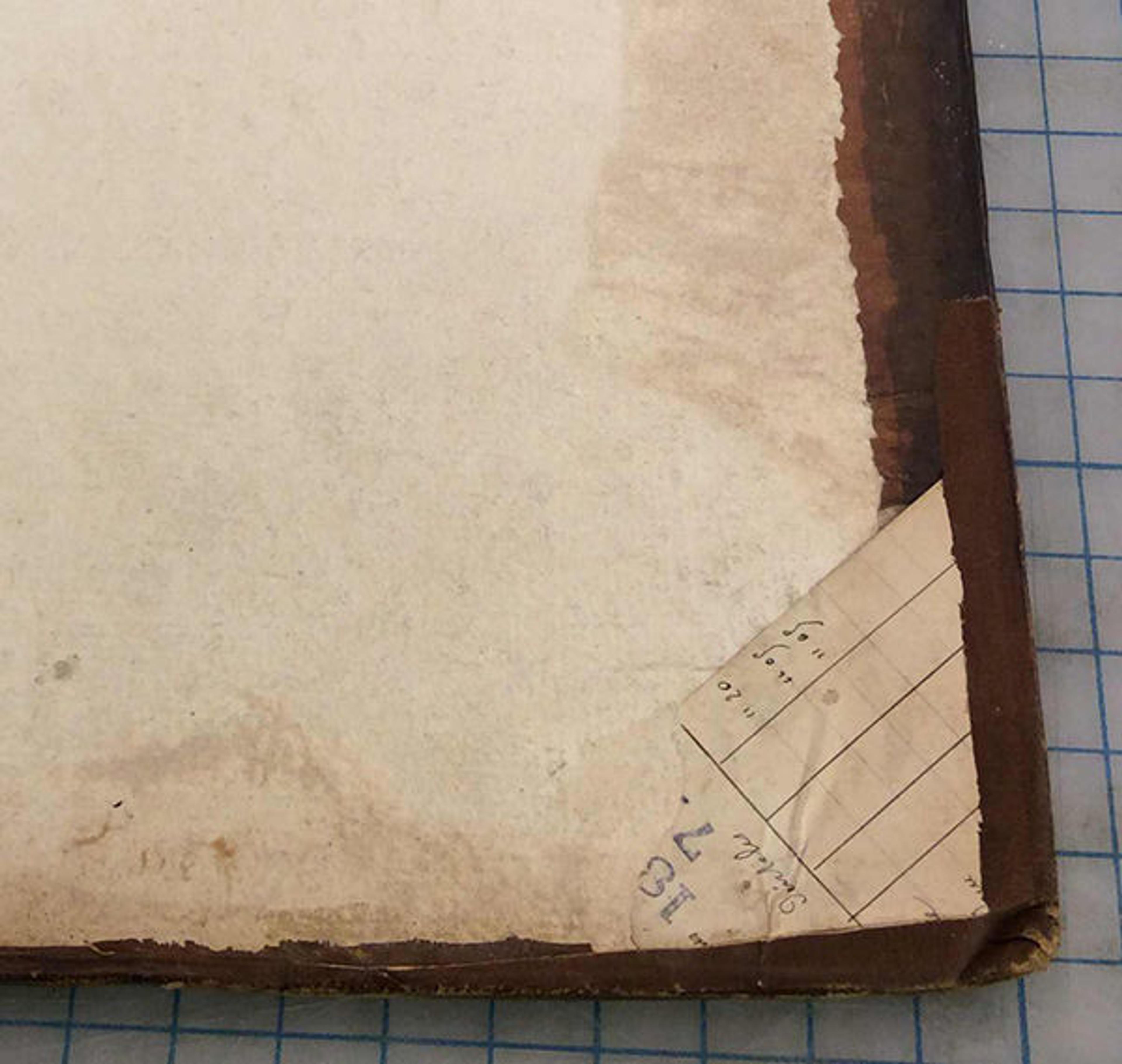
An example of spine repair applied to Fannie Merritt Farmer's The Boston Cooking School Cook Book using medical adhesive tape. From the bookbinding study collection of Mindell Dubansky
«There are so many wonderful things that can be said of books. They provide us with a perpetual key to knowledge and entertainment, and are emblematic of our development as humans. People love to read, live with, and make books of all kinds. And, despite recent advances in reading technologies, nothing replaces the synergistic thrill of physically interacting with a beautiful or favorite book.»
It is the most consulted and loved books that require repair, sometimes over and over again, and it is always upsetting when one of our favorite books become damaged. Yet few books have had the luxury of receiving professional conservation treatment or caring home repair. This post reflects on some of the classic, creative, and shocking repair styles characteristic of historic home and library repairs. Although contemporary conservators and binders no longer condone these techniques, they provide interesting evidence of past solutions for the repair of books.
Historical Home Repairs
The most common problems of overused books are broken endcaps and hinges, detached spines and covers, damaged corners, and torn pages. Before the advent of adhesive tape, hand sewing was the technique most used by book owners to repair bindings and pages. The sewn book repair shown below is a common nineteenth- and early twentieth-century home repair, in which a leather or cloth strip was placed over the bare, broken spine and sewn to the text and covers with a variety of running, whip, and stab stitches. While these Frankenstein-like repairs are not attractive and they constrict the opening of the book pages, they are strong and have lasted a very long time.

Repairs were made to this eighteenth-century French prayer book and Christian calendar using a leather spine patch. From the bookbinding study collection of Mindell Dubansky
Below is a detail of a nineteenth- or early twentieth-century repair to an inside corner of a book cover using a scrap of unrelated paper, possibly a piece of a sales receipt. It is the kind of mend we often see on antique books and serves as an example of the fact that, unlike conservators who go to a great deal of effort to repair books with compatible materials in a nonintrusive manner, most people have always repaired books with the materials that they have at hand. This type of repair has its charm and serves to recreate the lost paper, but it could also have a role in further damaging the book's original materials.

Historic paper repair on an interior board corner of L'Architecture Françoise, ou Recueil Des Plans, Elevations, Coupes Et Profils Des Eglises, Palais, Hôtels & Maisons particulieres de Paris. From the collection of the Department of Drawings and Prints (52.519.124 v. 3)
Waterproof, pressure-sensitive adhesive tapes were introduced in the 1930s by the 3M Company. Adhesive tapes were considered to be a quick, effective solution for a multitude of problems and were quickly adopted as a repair material for commercial applications, home repairs, mending decorative and paper objects, and bandaging wounds. The white adhesive tape you see used in the repair of Fannie Farmer's cookbook at the top of this post is a medical adhesive tape that was ubiquitous in the 1950s and 1960s. It was a strong, waterproof tape at the time of manufacture, but all of us know that regardless of its initial qualities as a quick fix, adhesive tape is not a lasting repair solution. The adhesives become embrittled and lose their adhesive properties, leaving behind unsightly and damaging residue and stains. Using large or longer pieces of it does not help to solve problems either; rather, using any size of tape causes problems and fails in the end, as is so clearly demonstrated by the cookbook repairs.
In my next post, I'll look at some examples of library repairs from the past that don't necessarily adhere to today's best practices.
Related Links
In Circulation: "The Fragility of Joints and Hinges" (August 12, 2015)
In Circulation: "The Fragility of Headcaps and the Safe Handling of Books" (May 27, 2015)